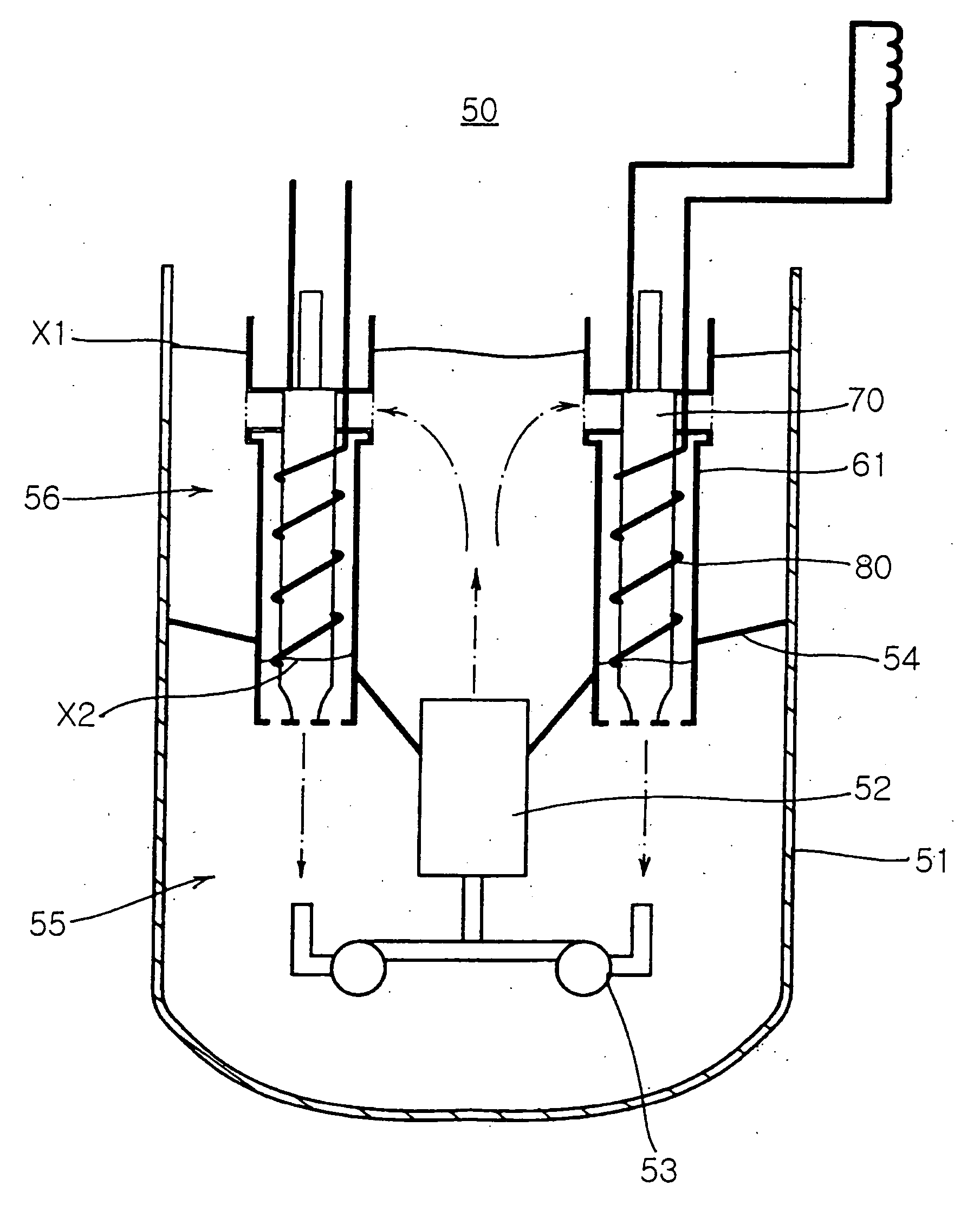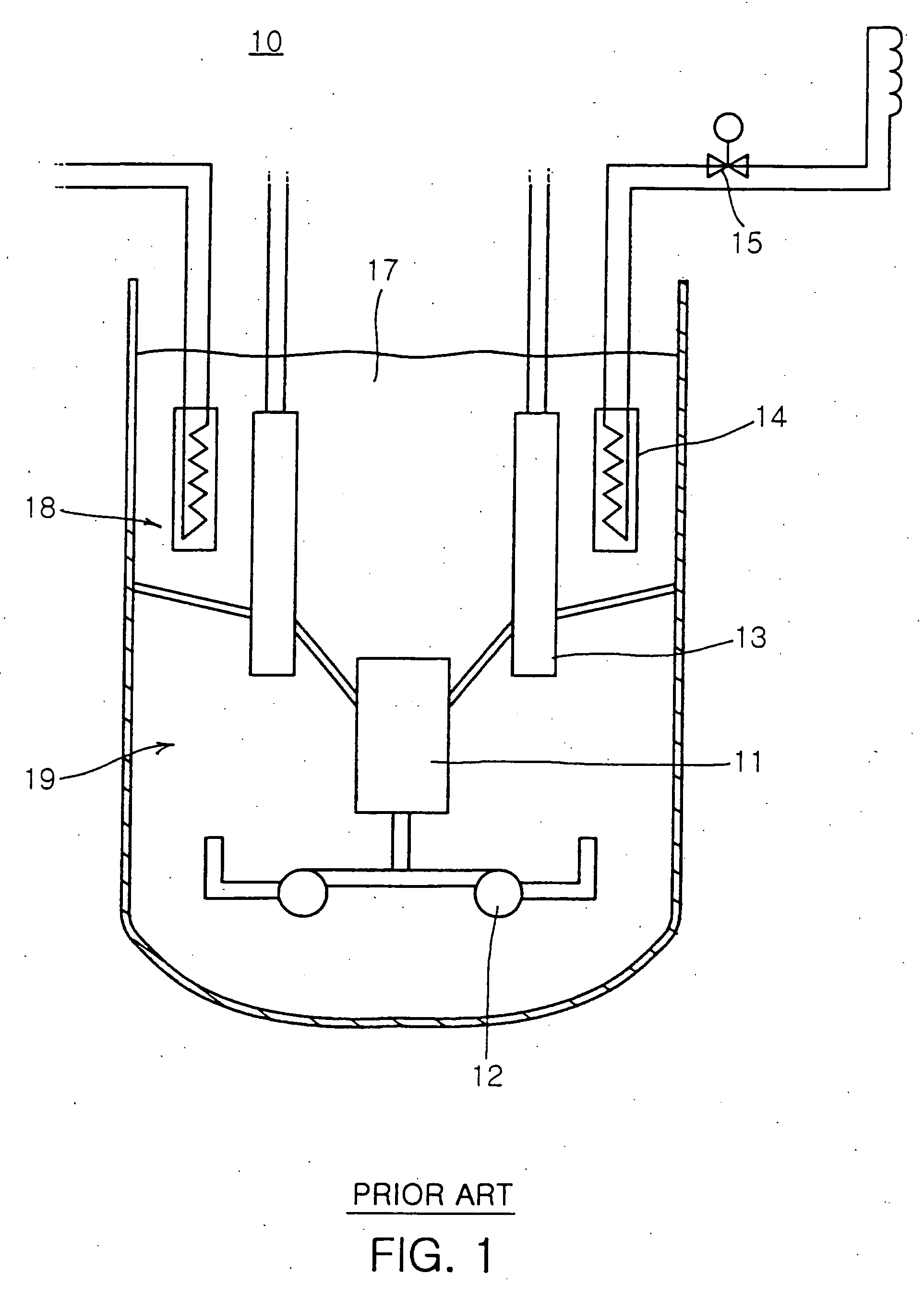Stable and passive decay heat removal system for liquid metal reactor
a liquid metal reactor and heat removal system technology, applied in the direction of nuclear reactors, nuclear elements, greenhouse gas reduction, etc., can solve the problems of inability to fully function, take several hours for the decay heat removal system to become fully functional, etc., to achieve the effect of effectively removing the decay hea
- Summary
- Abstract
- Description
- Claims
- Application Information
AI Technical Summary
Benefits of technology
Problems solved by technology
Method used
Image
Examples
first embodiment
[0037] Structure of decay heat removal system FIG. 3 is a longitudinal-sectional view of a decay heat removal system for a pool type reactor in accordance with the present invention, FIG. 4 is a perspective view illustrating the installation of an intermediate heat exchanger (IHX), a decay heat exchanger (DHX) and a cylinder, FIG. 5 is a cross-sectional view taken along the line A-A of FIG. 4, and FIG. 6 is a cross-sectional view taken along the line B-B of FIG. 4.
[0038] A pool type reactor 50 has intermediate heat exchangers (IHXs) 70 and pumps 53 installed in a reactor vessel 51, which is filled with coolant. As shown in FIG. 3, a hot pool 56 is formed in the reactor vessel 51 of the pool type reactor 50 to contain a hot fluid discharged from a reactor core 52. Further, a cold pool 55 is divided from the hot pool 55 by a partition 54 to contain cooled fluid formed from the hot fluid in the hot pool 55 by heat transfer.
[0039] When the heat generated by nuclear fission in the react...
second embodiment
[0072]FIG. 8 is a perspective view of a decay heat removal system for a pool type reactor in accordance with the present invention, FIG. 9 is a cross-sectional view of the switch valve of FIG. 8 during normal operation, and FIG. 10 is a cross-sectional view of the switch valve of FIG. 8 in an accident.
[0073] The decay heat removal system of the second embodiment of the present invention comprises a switch valve for allowing the fluid in the hot pool to circulate directly into the cylinder.
[0074] The reactor vessel, the IHX 70, the DHX 80 and the pump of the decay heat removal system in this embodiment have the same structures as those in the first embodiment. The components in this embodiment shown in FIG. 8, which are substantially the same as those in the first embodiment, are denoted by the same reference numerals even though they are depicted in different drawings.
[0075] A switch valve 91 is installed on the outer wall of the guide pipe 64 in the cylinder 61. A through hole 94...
PUM
 Login to View More
Login to View More Abstract
Description
Claims
Application Information
 Login to View More
Login to View More - R&D
- Intellectual Property
- Life Sciences
- Materials
- Tech Scout
- Unparalleled Data Quality
- Higher Quality Content
- 60% Fewer Hallucinations
Browse by: Latest US Patents, China's latest patents, Technical Efficacy Thesaurus, Application Domain, Technology Topic, Popular Technical Reports.
© 2025 PatSnap. All rights reserved.Legal|Privacy policy|Modern Slavery Act Transparency Statement|Sitemap|About US| Contact US: help@patsnap.com



